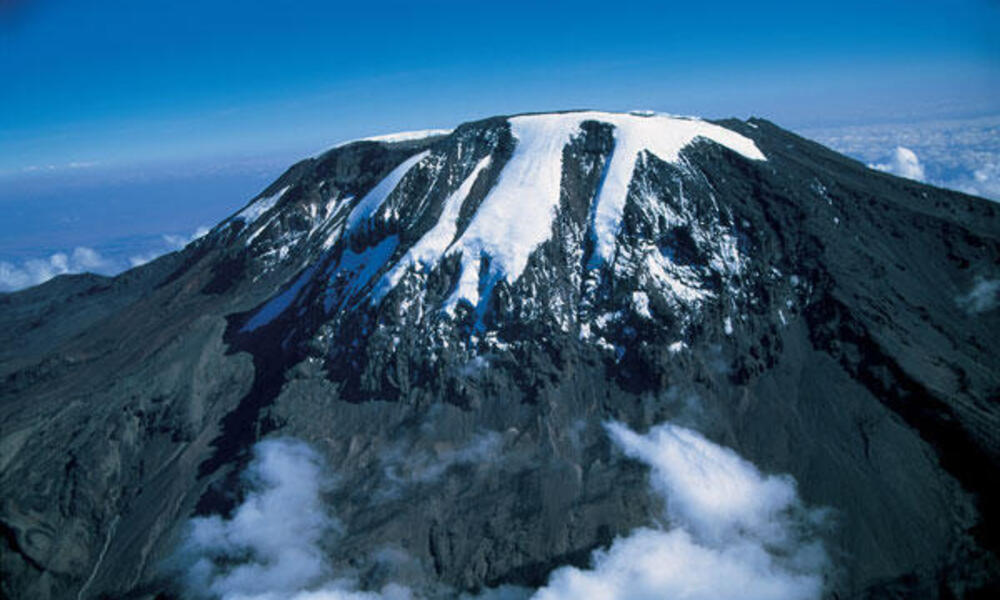Welcome to Facts Vibes! Get ready to embark on an exciting journey as we uncover fun facts about Mount Kilimanjaro. From its towering presence to its unique ecosystem, join us as we delve into the intriguing world of this iconic African peak.
Discovering the Fascinating World of Mount Kilimanjaro: Fun Facts and More
Mount Kilimanjaro, located in Tanzania, is the highest peak in Africa and attracts thousands of adventurers every year. Fascinatingly, it is a dormant volcano with three cones: Kibo, Mawenzi, and Shira. Rising to an elevation of 19,341 feet, Mount Kilimanjaro offers a challenging but rewarding climb for hikers and climbers. The diverse ecosystem found on the mountain includes rainforest, alpine meadows, and a glacier at the summit.
It’s interesting to note that Mount Kilimanjaro is not only a physical challenge, but also holds cultural significance. The Chagga people of Tanzania consider the mountain to be a sacred place and believe it to be the home of their deity.
Although the summit of Kilimanjaro is covered in snow and ice, the mountain is situated near the equator. Due to its high elevation, Mount Kilimanjaro experiences unique weather patterns, making it a climber’s paradise. This extraordinary mountain provides a once-in-a-lifetime experience for those who seek adventure and want to explore the beauty of Africa from a different perspective.
Most popular facts
Mount Kilimanjaro is the highest mountain in Africa, standing at 19,341 feet (5,895 meters) above sea level.
Mount Kilimanjaro is the highest mountain in Africa, standing at 19,341 feet (5,895 meters) above sea level.
It is a dormant stratovolcano with three main volcanic cones: Kibo, Mawenzi, and Shira.
Mount Kilimanjaro is a dormant stratovolcano with three main volcanic cones: Kibo, Mawenzi, and Shira.
The mountain is located in Tanzania, East Africa, near the equator.
The mountain is located in Tanzania, East Africa, near the equator.
Mount Kilimanjaro is a popular destination for hikers and climbers, attracting thousands of adventurers each year.
Mount Kilimanjaro is a popular destination for hikers and climbers, attracting thousands of adventurers each year.
The mountain is home to a variety of ecosystems, from tropical rainforest to alpine desert, due to its unique position and elevation.
The mountain is home to a variety of ecosystems, from tropical rainforest to alpine desert, due to its unique position and elevation.
Temperatures on the mountain can range from hot and humid at the base to freezing at the summit.
The temperatures on the mountain can range from hot and humid at the base to freezing at the summit.
Kilimanjaro’s glaciers have been shrinking over the years and are predicted to disappear completely by
The glaciers on Kilimanjaro have been shrinking over the years and are predicted to disappear completely by 2030.
Sure, the most important information about Information and facts is the accuracy and relevance of the content.
The first recorded successful summit of Mount Kilimanjaro was in 1889 by Hans Meyer and Ludwig Purtscheller.
The first recorded successful summit of Mount Kilimanjaro was in 1889 by Hans Meyer and Ludwig Purtscheller.
There are six official trekking routes to the summit, each offering different experiences and challenges.
The six official trekking routes to the summit offer different experiences and challenges.
The fastest recorded ascent of Kilimanjaro’s summit and descent took place in 2001, completed in just under 5 hours and 38 minutes.
The fastest recorded ascent of Kilimanjaro’s summit and descent took place in 2001, completed in just under 5 hours and 38 minutes.
Despite being a challenging climb, no technical climbing or mountaineering skills are required to reach the summit.
The climb does not require technical climbing or mountaineering skills despite being challenging.
The mountain has rich biodiversity, hosting various species of plants and animals, including several endangered species.
The mountain has rich biodiversity, hosting various species of plants and animals, including several endangered species.
Mount Kilimanjaro is a UNESCO World Heritage Site, recognized for its natural and cultural significance.
Mount Kilimanjaro is a UNESCO World Heritage Site, recognized for its natural and cultural significance.
It is believed that the name “Kilimanjaro” is derived from a combination of Swahili and Chagga words, meaning “shining mountain.”
The name “Kilimanjaro” is believed to be derived from a combination of Swahili and Chagga words, meaning “shining mountain.”
Various local tribes and communities reside around the mountain, each with their own cultural traditions and connections to Kilimanjaro.
The various local tribes and communities around Kilimanjaro have their own cultural traditions and connections to the mountain.
In conclusion, Mount Kilimanjaro is a remarkable natural wonder with an array of fun facts that showcase its uniqueness and importance in the world of adventure and conservation. Its diverse ecosystem, towering height, and cultural significance make it a destination worth exploring for any nature enthusiast. Whether you are drawn to its history, geography, or the challenge of summiting its peak, there is no doubt that Mount Kilimanjaro holds a special place in the hearts of many.
